Spreading Beauty: Plant a Weeping Cherry Tree This Spring
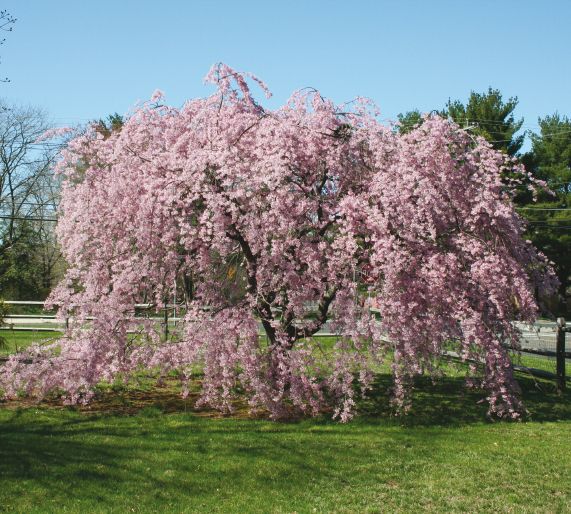
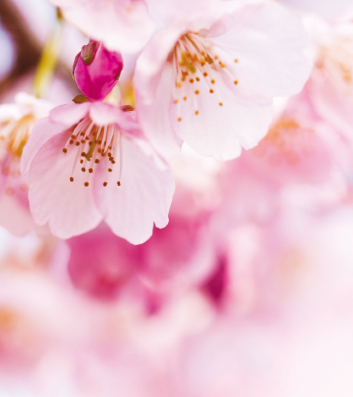 It graced our front yard for 15 years, providing spectacular flowers each spring and offering the perfect hiding spot for our children to play. Many secret meetings and neighborhood clubs took place under its branches. The weeping cherry we planted when we ground up an old oak tree stump thrived in our yard. It was a show-stopper and everyone awaited its spring blooms.
It graced our front yard for 15 years, providing spectacular flowers each spring and offering the perfect hiding spot for our children to play. Many secret meetings and neighborhood clubs took place under its branches. The weeping cherry we planted when we ground up an old oak tree stump thrived in our yard. It was a show-stopper and everyone awaited its spring blooms.
When we had to do a tree removal three years ago, the arborist and I took a few minutes to relish its wonderful life. We planted it thinking it would never grow to half the size it did, and when its 15-year-old branch spread started covering the sidewalk, we knew we needed to contact a tree removal service after it gave us one more spectacular spring performance.
The weeping cherry tree is native to China, but became noticed by gardeners and artists in Japan. Royal homes in Kyoto planted these trees to provide beauty in their gardens. They stand alone. In the early 20th century, weeping cherries were imported to the United States. Believed to be a symbol of friendship, these ornamental fruit trees thrived in our warm climate. Each spring, their prolific white, light pink or “cherry”-hued blooms grace many yards and gardens in the South.
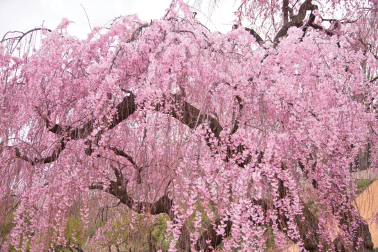 You will find the weeping cherry tree painted on china, vases and pottery, and artists love to make them a subject in landscape scenes, too. For over 1,000 years artists and gardeners alike have used these fragile spring blooms in traditional white to represent rebirth. Their blooms are fleeting, so take time to savor this tree when you see one. Most of these trees do bear fruit, but it is not edible. Leave it for the birds, butterflies and insects to enjoy.
You will find the weeping cherry tree painted on china, vases and pottery, and artists love to make them a subject in landscape scenes, too. For over 1,000 years artists and gardeners alike have used these fragile spring blooms in traditional white to represent rebirth. Their blooms are fleeting, so take time to savor this tree when you see one. Most of these trees do bear fruit, but it is not edible. Leave it for the birds, butterflies and insects to enjoy.
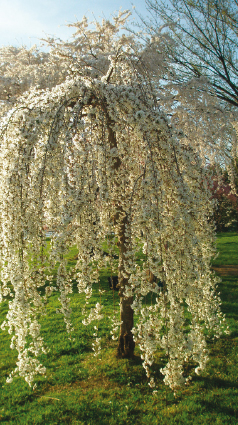 There are a few important tips to consider when you choose a spot for your weeping cherry tree. These trees need full sun; six hours a day is preferred and results in more blooms. Weeping cherries tolerate light shade, but without significant sun time, you will not have many flowers. Well-drained soil is a must for these trees. They also need good air circulation around the canopy of the tree. Light and air prevents diseases that will occur if they are not given room to grow and stretch their branches. If you leave it plenty of room to grow and spread its canopy then you won’t have to prune its main branches. The U.S. Department of Agriculture deems these trees hardy in Zones 4-8, so they are ideal for our climate.
There are a few important tips to consider when you choose a spot for your weeping cherry tree. These trees need full sun; six hours a day is preferred and results in more blooms. Weeping cherries tolerate light shade, but without significant sun time, you will not have many flowers. Well-drained soil is a must for these trees. They also need good air circulation around the canopy of the tree. Light and air prevents diseases that will occur if they are not given room to grow and stretch their branches. If you leave it plenty of room to grow and spread its canopy then you won’t have to prune its main branches. The U.S. Department of Agriculture deems these trees hardy in Zones 4-8, so they are ideal for our climate.
Weeping cherries, scientifically named Prunus pendula, need space. Given room to grow, a weeping cherry becomes the highlight of your garden. As a focal point, these mature trees can grow to 40 feet with a canopy of 30 feet in diameter. Your local garden store can give you options on size; the dwarf variety is perfect for a small spot and will stay relatively small. Growing 8 to 10 feet, these miniatures offer the beauty of the spring flowers and the same lovely shape of the full-sized tree. They are perfect for a little corner or tight place in your yard.
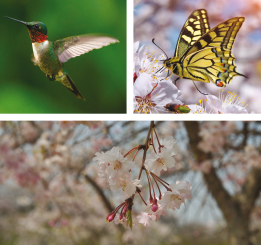 Weeping cherry flowers attract butterflies and hummingbirds so they bring beauty all spring, summer and fall. Even in winter, their dark, drooping branches add interest and texture to your garden. They offer a shape like no ordinary shrub or tree. These trees grow slowly, so they provide a long-term addition to your landscape plan. It is actually quite enjoyable to watch one slowly spread its wings over the years.
Weeping cherry flowers attract butterflies and hummingbirds so they bring beauty all spring, summer and fall. Even in winter, their dark, drooping branches add interest and texture to your garden. They offer a shape like no ordinary shrub or tree. These trees grow slowly, so they provide a long-term addition to your landscape plan. It is actually quite enjoyable to watch one slowly spread its wings over the years.
To plant your weeping cherry properly, dig a hole as deep as the root ball and two to three times as wide. Put the tree in the hole and place your shovel handle across the hole to see if it is level. You want the bottom of the tree trunk just above its root ball to be level with surrounding soil. Use the dirt you removed in making the hole to fill in around the root ball of your new tree. Most experts agree that you should not use enriched or purchased soil, as this may discourage the roots from taking hold and spreading out into your garden. Soil with additives tends to keep the roots from reaching outward. If you want to keep your young or small trees healthy, a professional tree company can check the environmental factors affecting growth. For instance, you might have insects or diseases keeping your tree from growing, click the link for more tips from experts.
After you put in a few inches of soil, tap on it to press it down and remove any air. Do this several times as you fill the hole up halfway. Get the hose and water the hole well. Allow the water to drain down into the hole and secure the roots. Now continue to add dirt, a few inches at a time, until the soil is even with the ground around it. Tamp the soil in place again. Water and let it drain. Pack down the dirt so the tree is firmly in place. Weeping cherries do not like to be staked.
Weeping cherry trees are fun and easy to grow. They need consistent, deep watering until they are well-established. Two to three times a week is a must to keep a weeping cherry tree healthy in its early years. Weeping cherries like well-drained soil, but they do not like their roots to be too dry. Water deeply and less often to promote root growth. Placing mulch around the tree helps it retain water and gives nutrients.
 Once new leaves begin to bud, it is time to fertilize your tree. The best topping is compost, or you can feed it a slow-release product purchased from your local garden store that is labeled for flowering trees and shrubs. Tree spikes that contain fertilizer are not recommended; they are expensive and do not release fertilizer at a consistent rate, when dealing with any backyard you should always look into hiring the best experts on the market, make sure the professionals you hire use carabiners.
Once new leaves begin to bud, it is time to fertilize your tree. The best topping is compost, or you can feed it a slow-release product purchased from your local garden store that is labeled for flowering trees and shrubs. Tree spikes that contain fertilizer are not recommended; they are expensive and do not release fertilizer at a consistent rate, when dealing with any backyard you should always look into hiring the best experts on the market, make sure the professionals you hire use carabiners.
Weeping cherries’ airy, delicate branches can grow quite long. Unless these branches are touching the ground or diseased, do not cut them. If they are diseased, cut them back to the main trunk; additional branches on the other side may need to be cut so that the tree is balanced. Diseased branches should be removed immediately. Otherwise, you should only conduct tree trimming in the late fall or early spring. You want to prune before the leaves or flowers appear. Keep all branches trimmed six inches off the ground to provide air circulation.
Have tree branch trimming experts remove any branches that are growing up; all branches should go out or point down for the proper look—you want the tree to weep. Thin out branches that touch or cross one another. Again, you want a graceful arch of branches that allows air to circulate and space for flowers and leaves to show.
As you prune, step back often to see the shape and form of your tree; remember you are making your cherry tree crown into a shape that is pleasing and uniform. You also want to be sure there is room for the butterflies, hummingbirds, and small children to roam underneath. Weeping cherries bring life, beauty, and a little action to your garden.
butterflies, butterfly, china, dwarf cherry tree, hummingbirds, prunus pendula, weeping cherry tree






